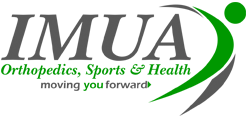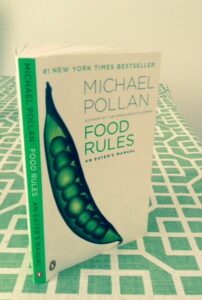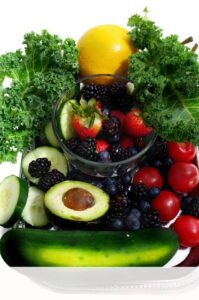I recently had the pleasure of listening to Michael Pollan speak at the Institute for Functional Medicine’s Annual Conference. (In case you missed our blog post about this awesome conference, you can read it here : https://imuaortho.com/blog/functional-perspectives-on-food-and-nutrition/)
If you’re a fan of health and wellness documentaries you’ll recognise Michael Pollan for his distinctive voice and his frank commentary on all matters related to food. A health doccy wouldn’t be the same without an interview with this knowledgeable food journalist. He was named in Time Magazine, as one of the one hundred most influential people in the world and that fact makes me even more distraught that I wasn’t able to snag a photo with him at the conference!
If you’ve ever heard the dictum ‘Eat Food.Not too much.Mostly Plants.‘ you’ve already been exposed to the rule that started it all. This is possibly one of the most oft quoted phrases by nutritional experts. In Michael Pollan’s book Food Rules he unravels those seven words of advice into a set of rules or ‘personal policies’ that are designed to guide us in eating real foods, in moderation. A wonderful side effect of this is a shift away from SAD (Standard American Diet). But, before I go any further I want to give credit and appreciation where it is due – all rules and italicized quotes that follow are from Michael Pollan’s book Food Rules: An Eater’s Manual.’
In America today, about seventeen thousand new products show up in the supermarket each year, but many of these products may not deserve to be called food. Why? Because most of them contain ‘highly processed concoctions designed by food scientists, consisting mostly of ingredients derived from corn and soy that no normal person keeps in the pantry, and they contain chemical additives with which the human body has not been long acquainted.’
Hence, Michael Pollan more accurately calls these products ‘edible foodlike substances,’ thereby excluding them from the Eat Food part of the founding rule. With that said, let’s get to those Five Fun Food Rules. I’ve chosen the rules that I think are most fun and that I hope will jump out of your memory when you’re scanning the aisles of brightly packaged products in your grocery store.
Avoid food products containing ingredients that a third-grader cannot pronounce. This rule can serve as a marker as to how processed a food product is. When you’re seeing things like ethoxylated diglycerides, calcium propionate or ammonuim sulfate that your third-grader is having a hard time with, your body may just not like it either. These ingredients are part of the food-makers chemistry set, designed to extend the shelf life of the products, not to extend your bodies life.
Eat only foods that have been cooked by humans. If you’re going to let others cook for you, you’re much better off if they are other humans, rather than corporations. In general, corporations cook with too much salt, sugar and fat, as well as with preservatives, colorings and other biological novelties.’ The caveat: restaurant meals are for special occasions.
Avoid foods that are pretending to be something they’re not. Food products can be imposters too! For example, to make something like nonfat cream cheese that contains neither cream nor cheese requires an excessive amount of processing. Things like margarine, artificial sweeteners and mock meats are imitations and are best avoided.
Eat your colors. The colors of vegetables and fruits reflect the different antioxidant phytochemicals, which protect us against chronic disease. The best bet is to eat a variety of different colors, since these phytochemicals all protect us in a slightly different way. This rule is a wonderful example of science proving an old wives tale – eat a healthy plate of food, featuring several different colors.
Don’t get your fuel from the same place your car does. Gas stations in America now make more money inside selling foods (and cigarettes) than they do outside selling gasoline. Most of the food products at gas stations are highly processed, imperishable snack foods and excessively sweetened beverages. Let gas stations be gas stations and get your body’s fuel elsewhere.
There are many other fun rules in Michael Pollan’s Food Rules. But what almost all of them point to is his last rule : Cook. The decline in home cooking closely parallels the rise in obesity and chronic disease and research shows that those who cook more are more likely to eat a more healthful diet.
I’m on a mission to guide clients in making cooking as easy (and fun) as possible, so that it can become a sustainable (and dare I say, enjoyable), part of their daily lives. What obstacles might be getting in the way of you being your healthiest self? Time? Fear of not knowing how or fear of not getting it right? Lack of planning? Whatever it may be, I would love to guide you in overcoming it, so that you can take back control of your health – imuahealth@gmail.com.











